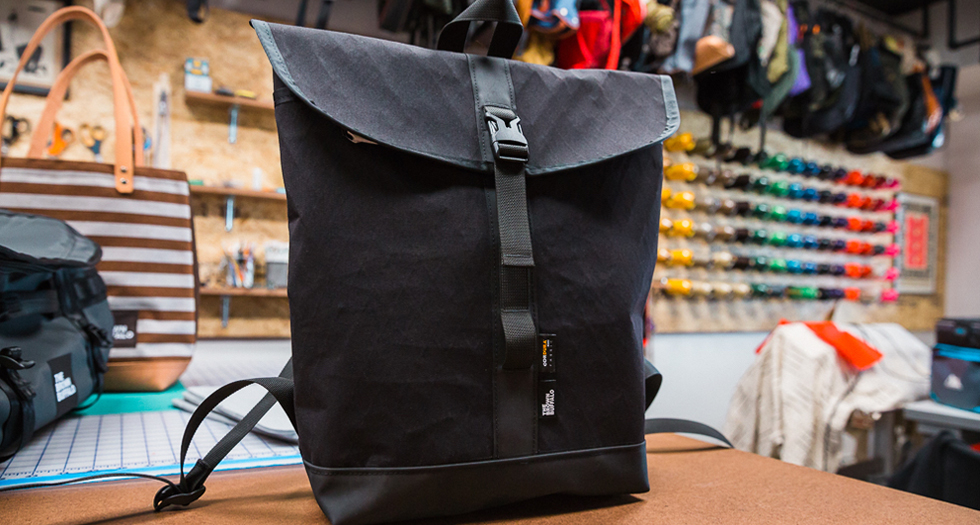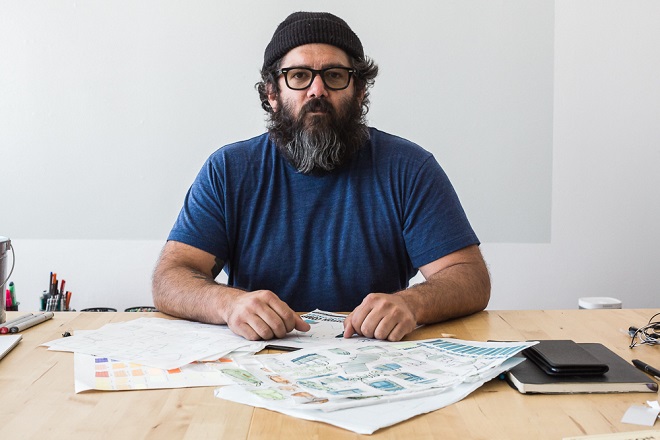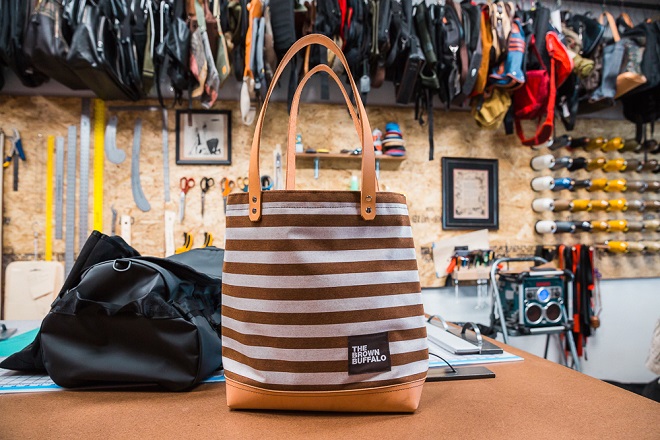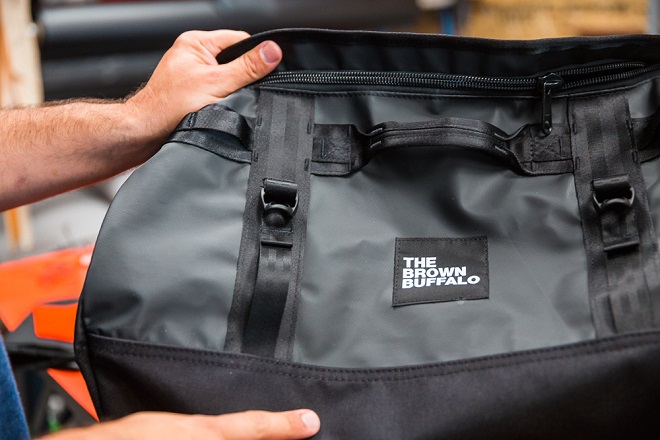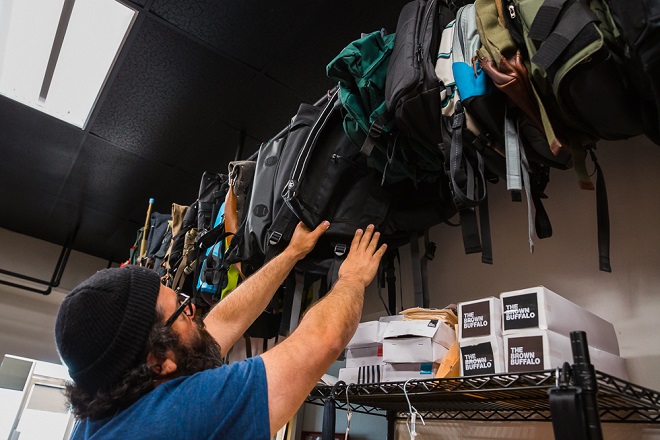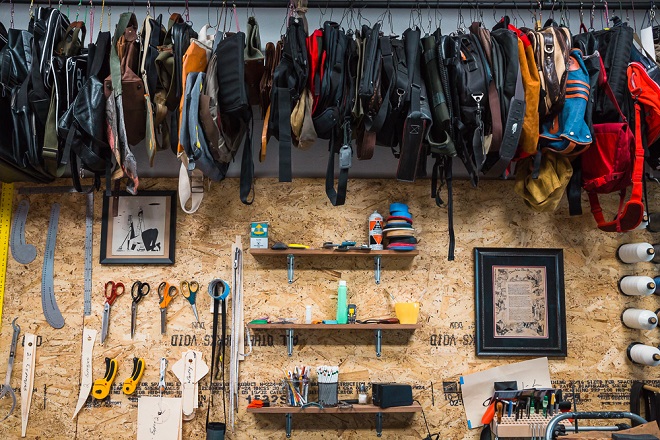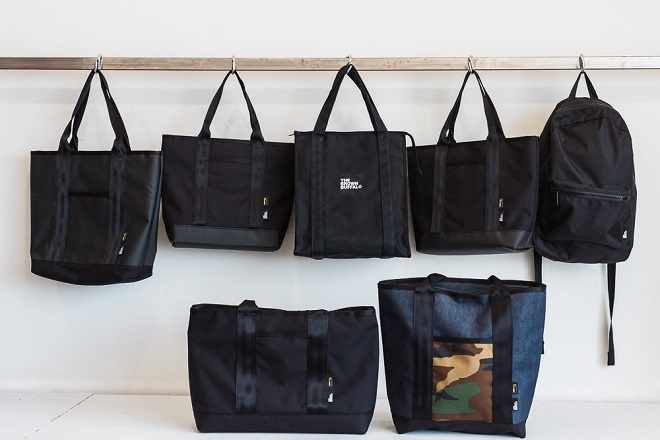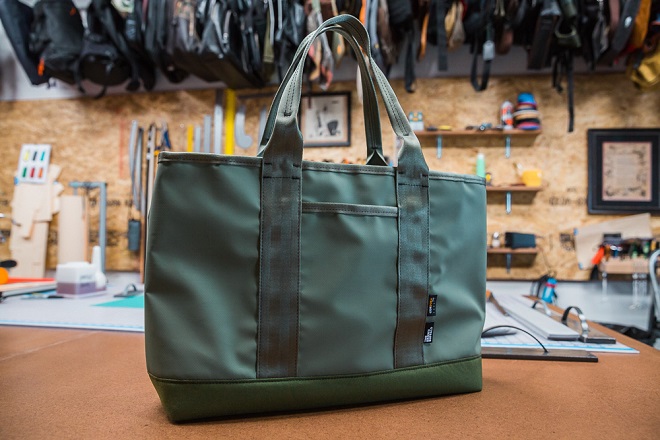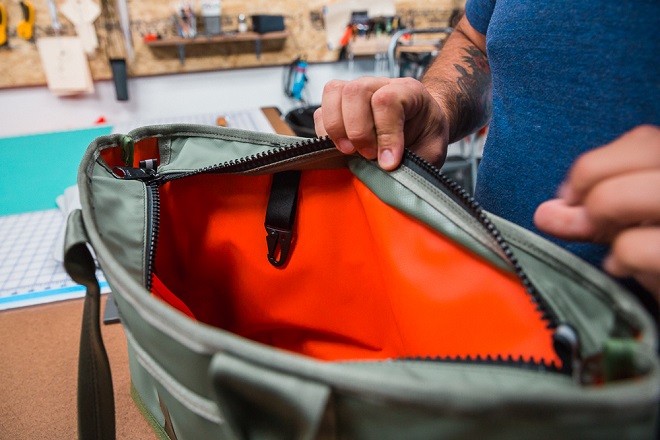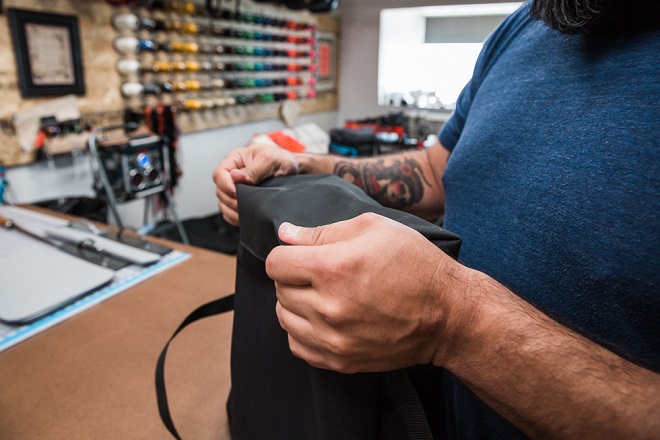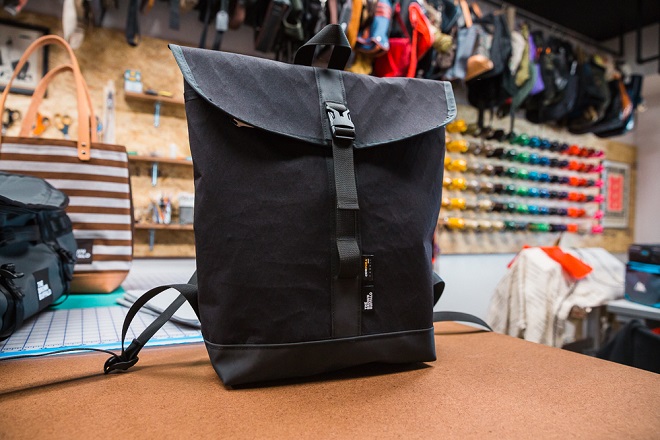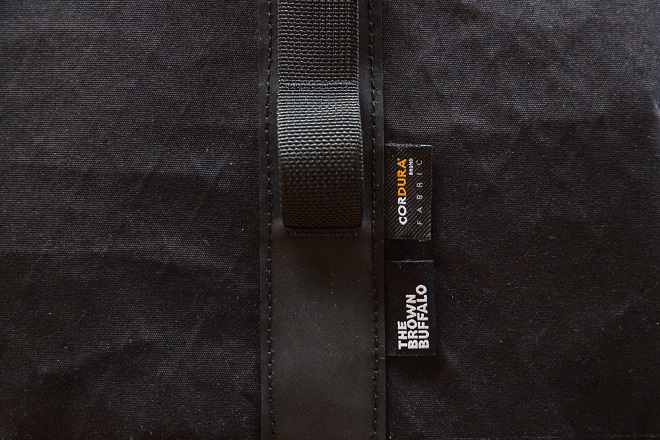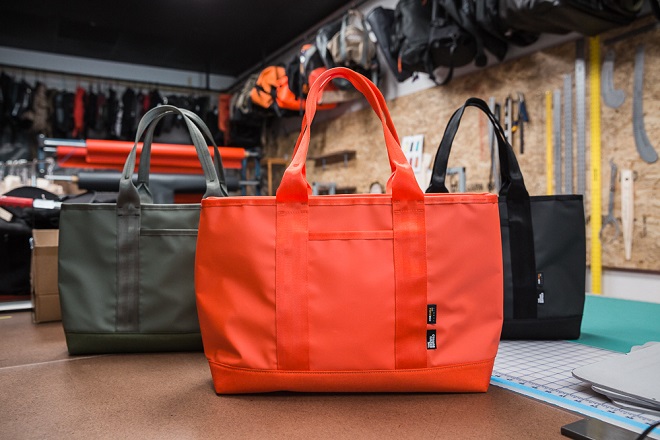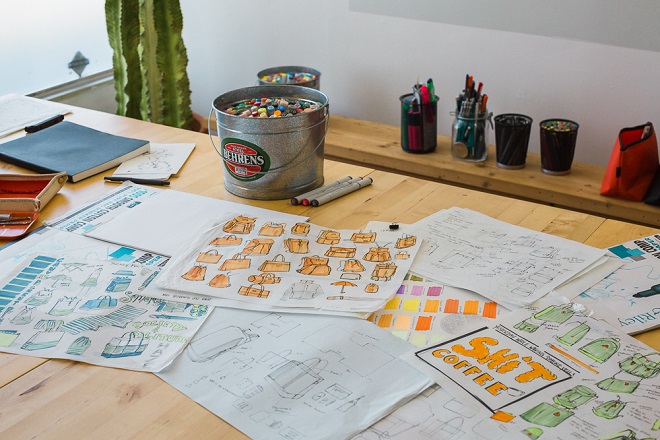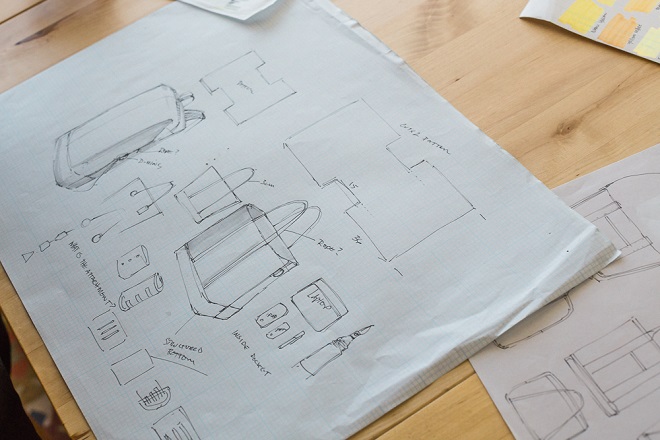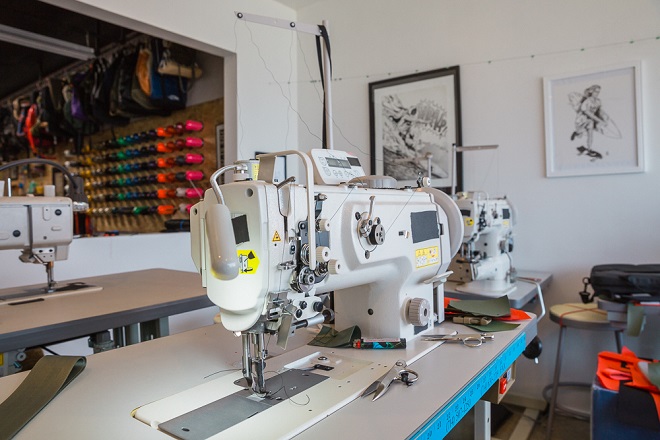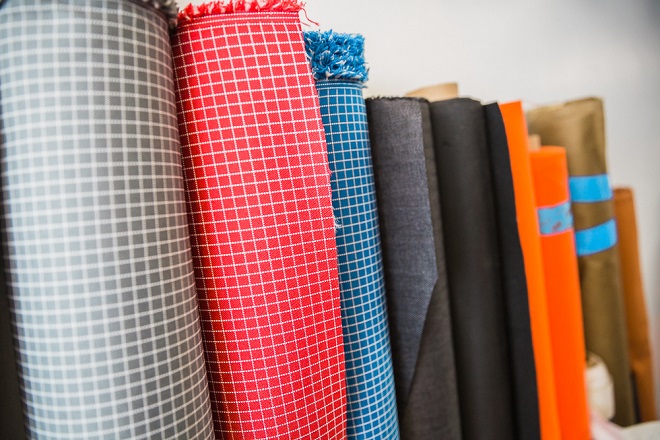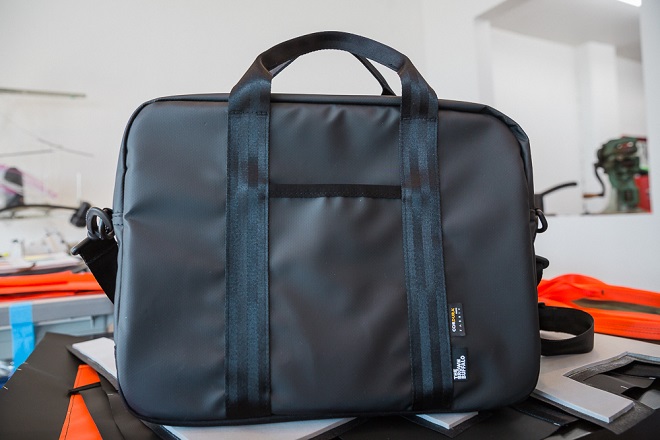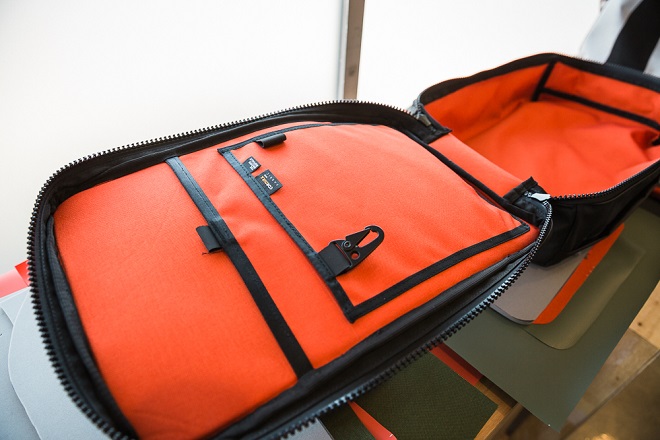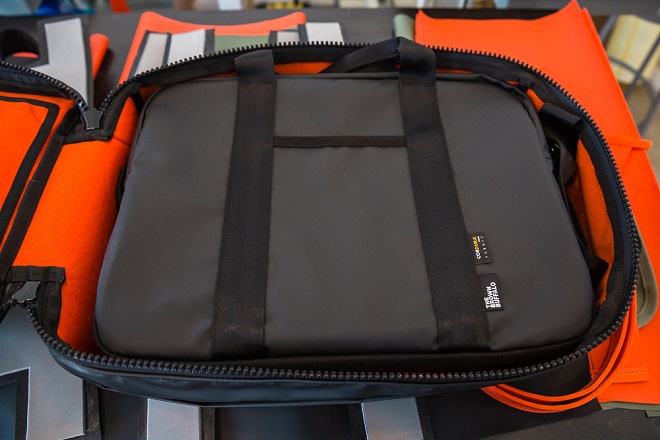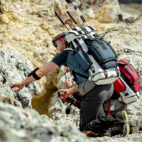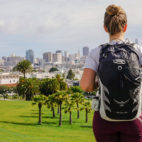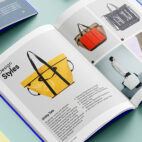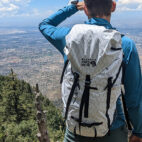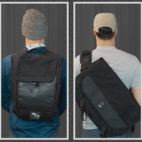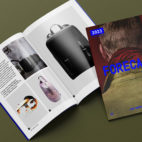The CORDURA® + The Brown Buffalo Collab :: Interview with Douglas Davidson
With an illustrious career that has spanned close to two decades in bag design, there are few who can rival the experience of Douglas Davidson, the founder of The Brown Buffalo. A humble upbringing combined with a hunger to create led him to stints at the helm of Burton Snowboards and The North Face before he set off on a personal journey to find freedom and build his own brand.
Right now, The Brown Buffalo launch is just weeks away and underpinned by a killer bag and pack collaboration with none other than fabric powerhouse CORDURA®. And so I sat with Douglas at The Brown Buffalo studio to talk about his career, creative process, the art of collaboration, and the world of carry through his eyes.
For those unfamiliar with your work and who you are, could you give us a brief background?
I’ve been designing bags for almost 17 years now. I’ve been working in products since the mid ’90s. Up until about 2005, I would say, it was more like the first days of trying to explore and understand what product design is, the different disciplines that fall within that realm. So those first ten years were really exploratory.
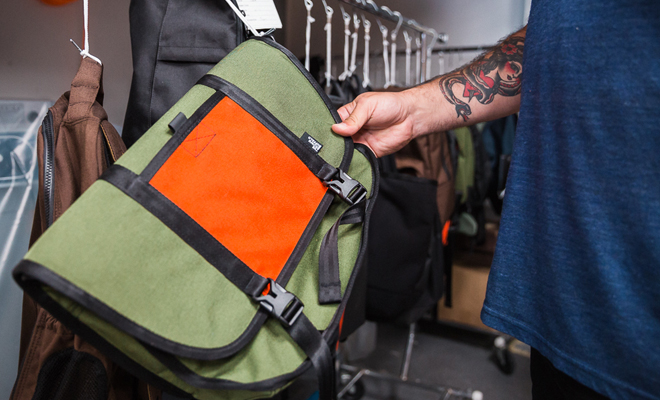
I was introduced to apparel design, footwear design, motor sports and the motorsports industry designing Motocross gear and F1 driving shoes and F1 driving gloves and things like that at the beginning. From there, being able to have my hands on quite a few different pieces of product, I was introduced to bags, probably in the mid ‘90s originally through skateboarding. A friend of mine owned a backpack company and he was making product. He really inspired me because I was just green as green can be and seeing a friend of yours making something and then being able to go and actually create a business out of it…being young, that made an impression on me. It helped develop a framework of possibly what I wanted to do.
But at that time I really had no idea, so from there it took about ten years to develop a point of view and throughout that time I focused on bags and that’s where I really got my start. I am really blessed with the opportunity I had to work with Burton Snowboards from 2003 until about 2015. I think that’s pretty rare these days, to have that opportunity. Within that time I took a couple of years off to go work specifically at The North Face and focus on that product and be able to go into that category and really explore.
“A friend of mine owned a backpack company and he was making product. He really inspired me because I was just green as green can be and seeing a friend of yours making something and then being able to go and actually create a business out of it…being young, that made an impression on me.”
That’s great. So, how did you start the Brown Buffalo?
The Brown Buffalo came out of really just freedom. I had a lot of friends who wanted to work with me while I was working at Burton Snowboards. I was still really green in the context of, you know, I had a lot of ego, I was young, I didn’t really understand that idea of team quite yet. So when I was at Burton I really was probably more self-absorbed.
“I am really blessed with the opportunity I had to work with Burton Snowboards from 2003 until about 2015. I think that’s pretty rare these days, to have that opportunity.”
But luckily I had a great manager, he understood where I was coming from and he understood that I was hungry and he understood that I had a lot of friends similar to his life. So when I gave my notice, we were just having a drink and he goes “Hey, what do you think about doing the same thing that you are doing but just from home?” At the time I was at home and I was like “Yeah for sure!”.
From that point on, that Friday actually, I gave my notice and went freelance and then by that next Monday I was on a flight to Portland, to Beaverton to go work with Nike on a project.
So, looking at these samples, I’m really liking the looks of the new collab, how did this project with CORDURA® come about?
Douglas: Cindy McNaull [the global CORDURA® brand and marketing director] and I met and started brainstorming a potential collaboration because I had seen the recent CORDURA® + Struktur Studio capsule collection at OR Show. Before I connected with Cindy I had actually connected with Skip Yowell, the co-founder of JanSport. Skip and I had a conversation when I was interviewing him and he spoke highly of CORDURA® fabric and its durability. I really liked the idea of the abrasive technology that they offer in their fabrics. So I took a deeper dive into studies from the abrasion point of view. I knew that I wanted to make bags. So I told myself that if I am going to do this, I am going to use the best materials that I know from my own experience. It wasn’t just a marketing play, it was literally from a functional point of view. I wanted to be able to work with who I think is the best supplier and the type of fabrics that I want to use.
“I knew that I wanted to make bags. So I told myself that if I am going to do this, I am going to use the best materials that I know from my own experience.”
From there I had a little knowledge of how much CORDURA® really offered in a library. So I was open minded, and I went into it thinking that I’m going to learn a lot here, so how much does CORDURA® offer? And then I realized that their libraries are extremely extensive. What typically you would find here in the States is such a small portion of what they offered compared to, you know if you went into an Outdoor Retailer show and you sat down and went through their library, it’s just hundreds and hundreds and hundreds of fabrics. So it took me a while to get up to speed, but Cindy and her team sent me quite a few different swatches and fabrics and I went through them. So now I’m selecting different fabrics that I feel resonate well with the Brown Buffalo brand.
And what’s the plan for that collection?
Right now it’s starting with a pretty focused line, it’s very narrow as far as the offering. I don’t want to make a lot; I want to make as little as possible but as good quality as possible that I can do here. I want to be able to offer a line that resonates with people who travel and who are professional. They want something that’s durable and they live in metropolitan cities where they…you know, in Southern California your car is kind of your bag. So it’s really focused on people outside of Southern California who I really relate to, just in my past experiences. We’ll take it from there and learn from those experiences. With the feedback we’ll receive, whether it’s through social networks or just word of mouth, we’ll continue to make improvements to the bags.
“I don’t want to make a lot; I want to make as little as possible but as good quality as possible that I can do here. I want to be able to offer a line that resonates with people who travel and who are professional.”
And with some of the collection I hear you are going to use CORDURA® TPX?
Yeah, correct. On some of the items, we have some concepts coming down the pipeline. We’re looking at some coolers, we’re looking at some lifestyle items, some furniture items, so items where we feel like the TPX is a natural connection for us. Those are some lead areas that we are playing around with right now.
What makes that material so special and different?
I like it because it’s lightweight yet durable. You are using a scrim in the middle and it’s laminated so it’s pretty water resistant without adding excess weight. It’s non-submersible, but that’s not what we are doing here. If you look at anyone who is out in the elements, we are really trying to help them out, protect them, but at the same time not give them a bag that weighs 40 pounds before they even stuff anything in it.
I used CORDURA® TPX fabric and CORDURA® 500D fabric to create a carry-all tote bag, trekking pack and messenger bag. The guiding design goals were simplicity, durability and functionality. I considered the features I’d want on a family outing. The tote works well for a trip to the beach, with plenty of space for the essentials and a water-resistant laminated bottom. The smaller trekking pack and messenger bag are great for city or outdoor day trips.
“I like it because it’s lightweight yet durable. You are using a scrim in the middle and it’s laminated so it’s pretty water resistant without adding excess weight.”
I really like the texture and shelf appeal of these premium fabrics. My design interest lies in creating premium products so working with the CORDURA® brand and the new TPX fabric felt like a natural fit. I wanted to showcase the range of end uses for the fabric, while encouraging others to push the boundaries and experiment themselves.
When will this collection be available?
The current collection will be available on June 20th online, specifically at thebrownbuffalo.com with more to come in the holiday.
And how many pieces are in your initial collection?
I think it’s roughly about half a dozen pieces, and then we’re going to offer three colors per piece. We’re going to have a lot of custom bags; we’re going to have a lot of one-off bags. Some of that might be that CORDURA® might come to us and say “Hey, we have this really cool new material, we want you to try it out” and we might make five of those. We are going to be able to play around a little bit. We just got our leather from Redwing, Minnesota the other day and that’s going to be a completely different fabric, collection and different purpose of bags. So that is the other component to the business. We’re not necessarily looking at seasons, we’re not looking at this 24-month wholesale/retail cycle anymore. We are now looking at, honestly, a 1 week retail window where we don’t have to wait two years to see the product. We can see it probably by the end of the week. Whether or not it works, it’s a different model that I am really excited about because now I can be a little bit freer with being creative.
“We’re going to have a lot of custom bags; we’re going to have a lot of one-off bags.”
With my past experience of almost 20 years of working in the factory space and being a real student of that industry, I know that we can bring something like that here to the USA and try to produce a product that is equal to if not better than what you are getting in your typical retail store.
So, I’m curious, what’s the meaning of the Brown Buffalo?
The back-story on that is that I really wanted something that was going to be connected to me. I’m adopted, I’ve been on my own since I was 19 years old. I didn’t have a professional education in the formal sense. And I’ve always been an outsider within the social groups that I’ve been in. Whether it was being cool or not cool, or being a part of something or not feeling a part of something, even as a youngster too, I grew up in a community where I was the younger kid in our group, and so I was always really the outsider to the group because I was the youngest in the group.
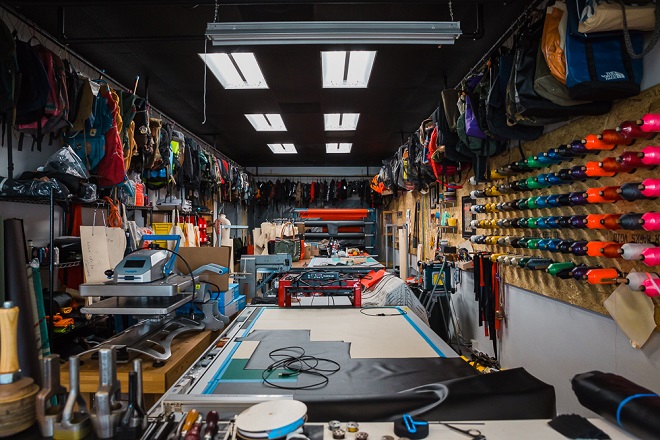
So for me, I’ve always looked at the spiritual animal or that spiritual connection of something that’s always roaming and I’ve always felt like the Buffalos kind of roam in the wild. And a lot of it is focused around that. I love the American culture, I love everything that America has to offer us. So I really felt like that was my direct connection.
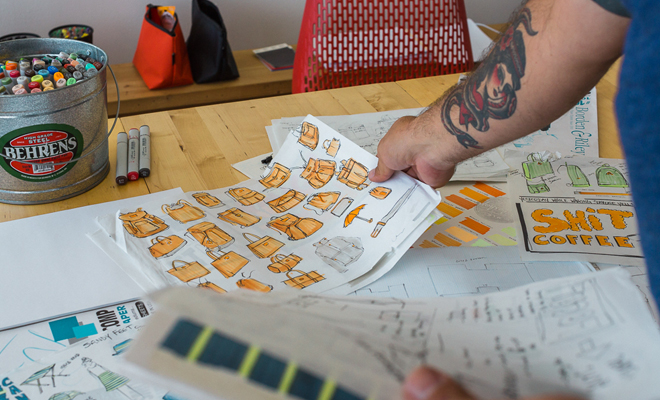
Definitely. Could you share any specific insights on what inspires your design?
Purpose, function and quality. I’ve gone through the stage in my life where everything was based on trend or you click into what’s cool, what’s not cool. That’s still relevant, but at the same time I think I’ve been able to develop that editing skill. I think it really is based around that functional point of view. At the end of the day, if someone is going to buy a bag from me, and they have a little insight into my background, they’re typically coming because they want something that actually works.
So how do you work when a brand commissions you to do a project? Do you work hand-in-hand with them? Do you work with their design team or their creative director? Or are you often free to pursue your own ideas?
I would say it depends on the brand. Some brands will come to me and they will ask, “Hey, we have a complete white space. We don’t know what to do with it. Here’s your budget, go for it, run with it.” With my background, when I started there were really limited resources as far as category managers, business unit directors, product managers, project managers, and developers who specifically worked in bags and equipment. Most of those resources were all tied up into apparel, or into footwear, whatever the focus of the brand was.
So for myself since Day 1, I’ve had to be a part of everything. So when there wasn’t a project manager, I had to be the project manager. When there wasn’t a category manager, I had to fill those shoes. Or learn how to ask the right questions or learn how to work with finance, learn how to work with the back end of the business – who is importing, exporting…you name it. So sometimes what happens is that because I can go into a company I can run through my own reports, and I’m able to look at the business plan but I’m also able to audit that business plan.
“I’ve gone through the stage in my life where everything was based on trend or you click into what’s cool, what’s not cool. That’s still relevant, but at the same time I think I’ve been able to develop that editing skill. I think it really is based around that functional point of view.”
It’s one thing to be able to design a project but it’s another thing to understand the complete 360 view of why that product is going to be sold, how it’s going to be sold, where it’s going to be sold, when it’s going to be shipped and understanding the back end of all the costs. So that’s my strength that I am able to bring to that collaboration or that project.
And in some cases people don’t want any of that information from me. They strictly want me to work in my shop here or work in the studio and try to come up with some concepts and link design language or evolve something that’s been there for a while. But it really varies depending on the ask from each client. So there’s really no one way to go about it.
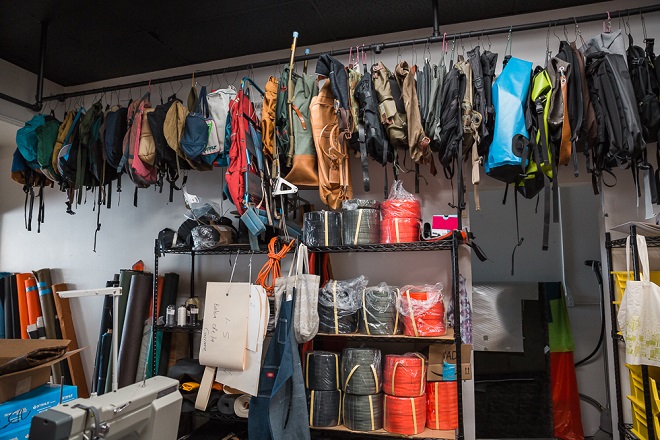
Are there any projects from your past that really stand out to you or that you are really proud of?
I would say that there are two projects actually, and it’s more from a learning lesson, it’s more from growing as a designer and also growing as an individual. Burton was such an important part of my career and my growth to what I’m doing, both from a creative point of view and a professional point of view. I grew up in that company in so many ways. Even knowing that I wasn’t affiliated as a day-to-day employee, I had so much exposure to that. So as a professional and as a creative, that was a pivoting point in my career.
“It’s one thing to be able to design a project but it’s another thing to understand the complete 360 view of why that product is going to be sold, how it’s going to be sold, where it’s going to be sold, when it’s going to be shipped and understanding the back end of all the costs.”
As a creative, and as somebody who is challenged to solve problems, I would also highlight being a part of the Meru expedition, as far as managing the design of all the equipment for that category with the designer and the group who worked on that. It was just an idea that myself, Conrad Anker who is a professional climber, and Scott McGuire had when we were in Utah at the sales meeting at The North Face. It was my first time meeting Conrad and we both sat down at a table, and he started sketching up this idea that he wanted to build a portaledge so he could stand up in it. Previously he had tried to do this expedition twice before and they weren’t able to complete both of those expeditions. But with the last one they were stuck for a long period of time inside the portaledge but they were sitting down or laying down the whole time so they weren’t able to stand up and move around and move freely. So that was one part of the project.
The other part of the project was reducing the load, so reducing the load on their camera bags, reducing the load on their whole bags, reducing the load anywhere we could think of. That’s where we were on the equipment side. My friend Ian was a design director for all the outdoor product, which in that company is really your outerwear and your layers and things like that. So Ian and I teamed up and built more of a creative story of how we could take this Meru expedition and build it into a bigger story and focus on the problems that these athletes were having. Whether it was from climate control, whether it was from load and trying to address that end, we just tackled every single problem.
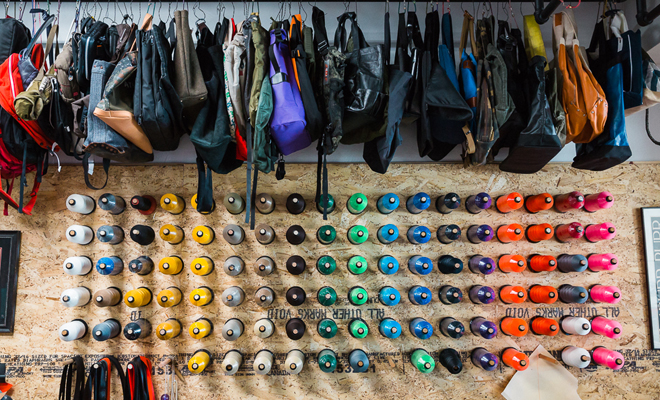
Then we kind of focused on these three different objectives that we felt our teams could really contribute to. And from there we just went to town and started going through all the products that we could affect. So we were able to reduce a camera bag through the use of hybrid foams, which are like an eighth of the weight of what your typical foam is. In the equipment side we took an approach similar to the way that rally cars are built. You have an engine that’s going from 0 to 100 to the peak of the mountain, and it’s not supposed to be used as your daily driver. Most products that we’d made up to that point were all commercialized for the masses, but that mass product doesn’t need to be used in that expedition. It could be, but it doesn’t need to be. We were doing one expedition so we were going to build it as lean as possible, we were going to take as much weight out as possible, we were going to reinforce where we needed to but we were just going to put what needs to be put into that project so it could get from base camp to summit and back again. It just needed to be used for that one haul.
“In the equipment side we took an approach similar to the way that rally cars are built. You have an engine that’s going from 0 to 100 to the peak of the mountain, and it’s not supposed to be used as your daily driver. Most products that we’d made up to that point were all commercialized for the masses, but that mass product doesn’t need to be used in that expedition.”
So that’s what we did. We reduced the load by around 30% I think it was, and that was a huge thing. Those guys summited, and they had really good weather and things worked out really well for them and they ended up making a movie behind the whole expedition. And I felt like that was a really big learning experience for the team that I was managing, and for all of us who were part of it. Just because it wasn’t a project that was planned; it was really something that happened on the fly of conversation at a sales meeting. With the passion that Conrad and his team have, they believed in us and they trusted us with their lives, with the product that we were developing for them.
What carry products do you use daily?
Well, it depends if I am using my camera. If I’m using my camera, I use a tote. I really try to be pretty concealed with what I’m carrying because you are carrying $10,000 worth of camera equipment so you don’t want it to get ripped off. I try to make bags that are pretty concealed and pretty discreet. If I’m just on the go, I have a brief or portfolio that I made and it’s pretty well organized on the inside for the things that I need to use it for.
When I travel, I use a designer backpack that actually holds my brief so it’s 2-in-1, but I’ve designed that strictly for traveling and the backpack is strictly for traveling. But again, it’s pretty discreet just so people can’t access it. If I’m on the train they can’t access it on the inside or if I’m on a subway or wherever. Then as far as weather, you never know where you are going to be at so I made it pretty waterproof on the outside as well.
“With my past experience of almost 20 years of working in the factory space and being a real student of that industry, I know that we can bring something like that here to the USA and try to produce a product that is equal to if not better than what you are getting in your typical retail store.”
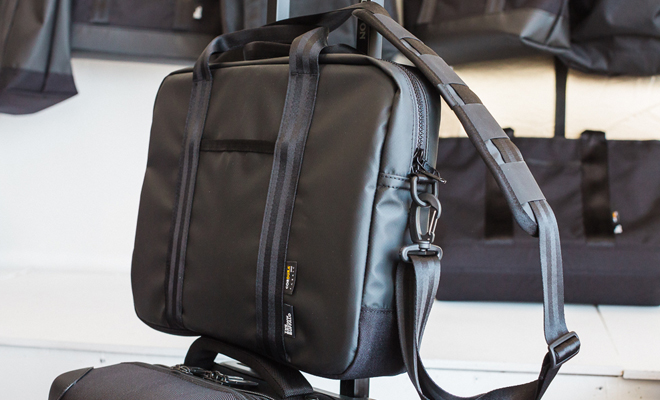
And finally, any advice for any aspiring industrial designers?
It depends on where they are at in their career. If they are at the beginning, go and become good at something. Don’t be a generalist, don’t try and say you can do everything. If you want to go design everything, do design everything. But if you actually become good at one thing and become an expert in that one thing, you can go on and do other things in your life, but become an expert in at least something.
If you are more experienced and you are trying to figure out where the next step is for you, try to identify your strengths and what you bring to a team. Are you a leader? Do you like to strictly work on projects? For people who get distracted by the noise of titles and money and things like that, you can eventually have those things, but they are not going to answer your problems, they are just there. If you are doing a great job, you are going to be compensated. If you are doing a great job and you have a poor attitude, you are probably not going to be compensated.
If you gain that experience and you can contribute to a team and be part of a team and at a high level and people want to work with you, you will probably be compensated. But most importantly just make sure you are happy and you are doing what you want to do.
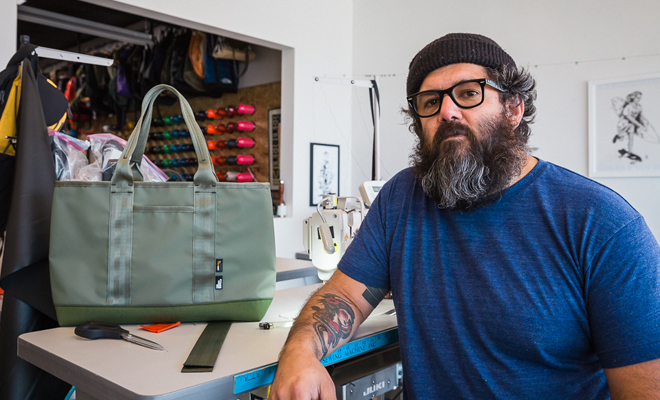
*This is a sponsored post produced in partnership with CORDURA®.





 Carry Awards
Carry Awards Insights
Insights Liking
Liking Projects
Projects Interviews
Interviews
